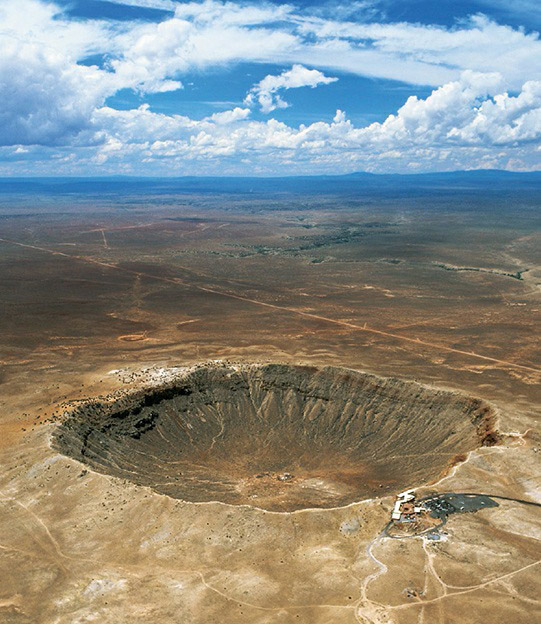Meteor Crater, located near Flagstaff, Arizona, stands as a striking testament to the Earth’s history of celestial impacts. Formed about 50,000 years ago when an iron and nickel asteroid, measuring roughly 160 feet in diameter, collided with the Colorado Plateau at an astonishing speed of 40,000 miles per hour, this crater has become a focal point for studying the impact phenomena on Earth. The collision resulted in an explosion equivalent to 10 megatons of TNT, leaving behind a crater approximately 3,900 feet wide and 560 feet deep.
Known also as Barringer Crater or Canyon Diablo Crater, Meteor Crater is exceptionally well-preserved, largely due to Arizona’s arid climate which has minimized erosion over millennia. This preservation makes the crater an invaluable site for scientific research and education, providing insights into the early solar system’s conditions and the aftermath of asteroid impacts.
Meteor Crater’s significance extends beyond geology; it also serves as a reminder of the ongoing presence of space debris and the potential for future impacts. It highlights the dynamic and ever-evolving nature of our planet and its relationship with the broader cosmos.

